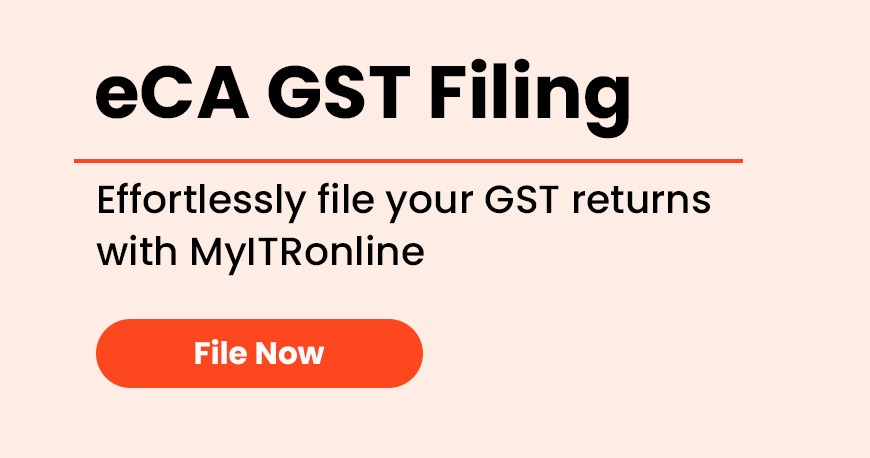What is GST?
GST is a type of tax that is applied to goods and services which are being sold within the country for the purpose of consumption domestically. Goods and service (GST) tax is added to the final price of the product and paid by the consumers including the GST in the final price. The collected portion of the (GST) is remitted to the government by the sellers and businesses. Goods and services tax is a common tax that is used by the government of many other countries across the world. (GST) goods and services tax is also known as Value-Added-Tax in other countries.
Types of goods and service tax
There are mainly four types of (GST) good and service tax. These are CGST, SGST, IGST, and UTGST. Let's briefly understand all of them below.
- (CGS) Central Goods and Services Tax - CGST is an intrastate tax that is applicable to the supply of goods and services by the central government. Intrastate means within one state. As per the act of central goods and service act 2017, CGST is applicable all over India except the Jammu and Kashmir. The generated revenue under the CGST is remitted to the central government.
- (SGST) State Goods and Service Tax - SGST or state goods and service tax is levied by the state government. It falls under the goods and service tax act 2016. SGST tax is levied on the transaction value of goods and services which are supplied as per section 15 of the SGST act. The generated revenue goes to the state government where the goods and services are consumed.
- (IGST) Integrated Goods and Service Tax - IGST is represented as integrated Goods and Service Tax which is a part of the concept of “one nation one tax.” IGST is taxed on the supply of goods and services from one state to another. IGST is equal to the SGST+CGST. Integrated goods and services tax is paid by the supplier while importing his service from one state to another or interstate
- (UTGST) Union Territory Goods and Services Tax - UTGST refers to the union territory goods and service tax. This UTGST is nothing but a tax that is applicable to the supply of goods and services within union territories. There are currently five union territories having a respective legislature. These are the following Chandigarh, Lakshadweep, Daman and Diu, Dadra and Nagar Haveli, Andaman and Nicobar islands.
What is a GST calculator?
A GST calculator is a simple utility tool that helps you to calculate the payable GST amount in a month or quarter. Taxpayers are now well versed in tax charges with the help of a GST calculator. GST calculator has made the process of evaluating payable GST amounts easy to understand and can be accessed anytime and anywhere. GST calculator helps you to calculate the net price of the product including the GST amount.
How to use Myitronline GST calculator?
Myitronline GST calculator can be used to calculate GST efficiently. Myitronline GST calculator is so easy to use with a simple interface that anyone can evaluate GST amount by using it. Following are the steps.
- Search myitronline gst calculator, Go to the section of calculators and click on the GST calculator.
- Enter the required details there.
- Net price of the service, product, or goods.
- Applicable GST rate like 5%, 18%,12%, 28%
- Click on the ‘calculate’ button. Myitronline GST calculator will show payable tax amounts for each tax head CGST, SGST, or IGST along with the gross price of the goods and services.
The formula for the calculation of GST
There exists a formula for calculating the GST amount. Any business, wholesaler, retailer, or manufacturer can easily make the calculation with the help of a formula.
- Add GST
(Actual Price* GST% ) / 100 = GST Payment
Actual Price + GST Amount = Net Cost - Remove GST
Actual Cost - (Original Cost * (100 / (100 + GST% ) = GST Amount
Actual Cost - GST Payment = Net Price
Following is an example to understand this formula.
| Rate (%) | Amount | |
|---|---|---|
| Original cost of goods | Rs.1,00,000 | |
| GST | 18 % | Rs. 18,000 |
| Cost of goods sold | Rs. 1,18,000 |
GST calculation for manufacturers.
At a moderate cost of Rs.10,000, the producer saves Rs 1405 which indicates saving tax of 14% on costs. This shows a reduction in producer costs, the advantages of which are finally passed on to merchants, and shoppers.
| Rate (%) | Pre-GST | Post-GST | |
|---|---|---|---|
| Cost of product | 10000 | 10000 | |
| Excise duty | 12% | 1200 | Nil |
| Profit | 10% | 1000 | 1000 |
| TOTAL | 12200 | 11000 | |
| VAT | 12.50% | 1525 | Nil |
| CGST | 6% | Nil | 660 |
| SGST | 6% | Nil | 660 |
| Final invoice to the wholesaler | 13725 | 12320 |
GST calculation for the merchants, retailers, and shoppers
| Rate (%) | Pre- GST | Post- GST | |
|---|---|---|---|
| Cost of product | 13725 | 12320 | |
| Profit | 10% | 1373 | 12320 |
| TOTAL | 15098 | 1232 | |
| VAT | 12.50% | 1887 | Nil |
| CGST | 6% | Nil | 813 |
| SGST | 6% | Nil | 813 |
| Final invoice to the consumer | 16985 | 15178 |
Check out our Myitronliine GST online calculator for the meticulous and detailed calculation of net payable GST.






